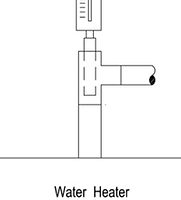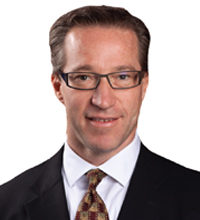Missing the obvious

Recently, I spent the better part of a day trouble shooting the hot water circulation system on a building we designed and built back in 2008. This particular building has been a bit of a bear in several respects. First, it was built and the developer went bankrupt, so the building sat dormant. Many of you surely already know that there is nothing worse for a building than sitting empty unless it has been thoroughly mothballed.
After a second owner and eventually a third owner, the building came to life gradually as tenants started to move in during recent months. Years of dormancy did not pass without ill effect, and we are working with the new owner to correct the results of years of neglect.
One troublesome problem was that one of the pressure zones was not circulating hot water sufficiently, and the zone was dropping in temperature more that it should have been. This pressure zone is supplied from the central water heaters and has PRVs on the cold and hot water to knock the pressure down. Downstream of the PRVs the hot water forms a series of parallel loops that return through a pump and booster heater before it is reintroduced to the low pressure hot water system. In theory the system should work fine, but the temperature was falling off and we couldn’t figure out why.
When I say we I am referring to a small team of people from my own firm, the building manager, and a third party engineer named David Fruchtman with his own firm of his same name, hired by the owner to protect his interests – never a bad idea. Fruchtman has a mechanical design firm with a heavy emphasis on forensics.
My own experience with forensic engineers is that they are sometimes judgmental and critical to an unfair degree. As they say, it is easy to play the role of the critic. However, Fruchtman is not that way. He is both knowledgeable and fair, reluctant to criticize, and very much a team player. The five of us got our hands dirty and our shirts wet while we made every effort to understand why this zone was not circulating.
We opened and closed valves; we purged water from the booster heater; we measured the flow on the circulation pump as only 1.4 gpm when it should have been ten times that. Was the circ pump frozen from when the building sat? No, it was a new pump. Was the check valve frozen closed? No, we confirmed that it was not. We decided to change out some piping that could have been larger, which we knew would help but would not make a dramatic difference.
None of these efforts made any difference. What was it we were missing? Was the pump simply not big enough?
Circulation pumps can be hard to calculate accurately, especially for relatively small systems, but even if undersized it should still be moving more than 1.4 gpm. The scheduled operating point was 14 gpm and 15-feet of head. Even when we purged the booster heater, the circ pump still didn’t flow more than a few gpm. Was the pump spinning backwards? No. Was the booster heater firing? Yes. Hmmm…
The water heater had a thermometer on its outlet. We pulled the thermometer out of its well because it happened to be broken. That’s when the secret revealed itself. We held the thermometer adjacent to the tee fitting where it had been installed and the problem became obvious. The length of the thermometer well was such that it was obstructing the outlet of the tee. The fit was fairly tight inside the tee and corrosion had made the fit even tighter. No wonder only 1.4 gpm could sneak passed that fitting! (See Figure)
We removed the thermometer and its well and capped the top of the tee where it had been. Immediately the flow of the pump increased to 10 gpm. A little less than scheduled, but a dramatic improvement. The hot water zone started to warm up right away.
I guess the title of this article is misleading, because the thermometer well obstruction was far from obvious – but it was right in front of our collective faces for many hours. Other potential stumbling blocks that we studied during this forensic analysis were as follows.
Water heaters: for electric water heaters be sure you have dual firing elements if you need the full kW load, as they can often be ordered either way.
Also for electric water heaters, if you specified 230V and the electrician wires for 208V you will lose 25 percent of your heating capacity. For hot water circulation pumps, be sure to add a little fat to the calculated friction head. There are many field variables that can increase the pressure demand on these pumps, but also put a throttling valve on the discharge in case the flow needs to be throttled back. Excessive velocity in hot water circulation can wreak havoc on copper pipe. n
Timothy Allinson is vice president of Engineering at Murray Co., Mechanical Contractors, in Long Beach, Calif. He holds a BSME from Tufts University and an MBA from New York University. He is a professional engineer licensed in both mechanical and fire protection engineering in various states, and is a LEED accredited professional. Allinson is a past-president of ASPE, both the New York and Orange County chapters. He can be reached at lagunatictim@gmail.com.





